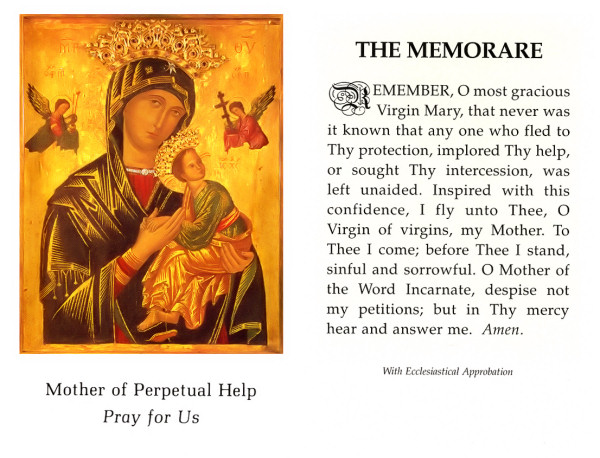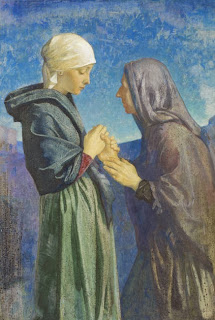'My Lord and my God!' Sunday Reflections, Second Sunday of Easter Year B
From The Gospel of John (2003) Directed by Philip Saville. Jesus played by Henry Ian Cusick; narrator, Christopher Plummer.
Readings (New American Bible: Philippines, USA)
Gospel John 20:19-31 (Jerusalem Bible: Australia, England & Wales, India [optional], Ireland, New Zealand, Pakistan, Scotland, South Africa)
In the evening of that same day, the first day of the week, the doors were closed in the room where the disciples were, for fear of the Jews. Jesus came and stood among them. He said to them, 'Peace be with you,' and showed them his hands and his side. The disciples were filled with joy when they saw the Lord, and he said to them again,
Peace be with you.
'As the Father sent me,
so am I sending you.'
'As the Father sent me,
so am I sending you.'
After saying this he breathed on them and said:
'Receive the Holy Spirit.
For those whose sins you forgive,
they are forgiven;
for those whose sins you retain,
they are retained.'
For those whose sins you forgive,
they are forgiven;
for those whose sins you retain,
they are retained.'
Thomas, called the Twin, who was one of the Twelve, was not with them when Jesus came. When the disciples said, 'We have seen the Lord,' he answered, 'Unless I see the holes that the nails made in his hands and can put my finger into the holes they made, and unless I can put my hand into his side, I refuse to believe.' Eight days later the disciples were in the house again and Thomas was with them. The doors were closed, but Jesus came in and stood among them. 'Peace be with you,' he said. Then he spoke to Thomas, 'Put your finger here; look, here are my hands. Give me your hand; put it into my side. Doubt no longer but believe.' Thomas replied, 'My Lord and my God!' Jesus said to him:
'You believe because you can see me.
Happy are those who have not seen and yet believe.'
Happy are those who have not seen and yet believe.'
There were many other signs that Jesus worked and the disciples saw, but they are not recorded in this book. These are recorded so that -you may believe that Jesus is the Christ, the Son of God, and that believing this you may have life through his name.
An Soiscéal Eoin 20:19-31 (Gaeilge, Irish)
Tráthnóna an lae chéanna, an chéad lá den tseachtain, agus na doirse faoi ghlas le
heagla na nGiúdach, san áit ina raibh na deisceabail, tháinig Íosa agus sheas ina measc agus dúirt leo:
heagla na nGiúdach, san áit ina raibh na deisceabail, tháinig Íosa agus sheas ina measc agus dúirt leo:
“Síocháin daoibh!”
Á rá sin dó, thaispeáin sé dóibh a lámha agus a chliathán. Bhí áthas ar na deisceabail nuair a chonaic siad an Tiarna. Dúirt Íosa leo ansin arís:
“Síocháin daoibh! Amhail mar a chuir an tAthair uaidh mise,
táimse do bhur gcursa uaim freisin.”
táimse do bhur gcursa uaim freisin.”
Arna rá sin dó, d’análaigh sé orthu agus dúirt leo:
“Glacaigí an Spiorad Naomh.
Na daoine a maithfidh sibh a bpeacaí dóibh,
beidh siad maite dóibh;
na daoine a gcoinneoidh sibh a bpeacaí,
beidh a bpeacaí coinnithe.”
Na daoine a maithfidh sibh a bpeacaí dóibh,
beidh siad maite dóibh;
na daoine a gcoinneoidh sibh a bpeacaí,
beidh a bpeacaí coinnithe.”
Tomás, duine den dáréag ar a dtugtaí an Leathchúpla, ní raibh sé leo nuair a tháinig Íosa. Dúirt na deisceabail eile leis: “Chonaiceamar an Tiarna.” Ach dúirt seisean leo: “Mura bhfeicfidh mé rian na dtairní ar a dhearnana, agus mo mhéar a chur i bpoll na dtairní, agus mo lámh ina chliathán, ní chreidfidh mé.” Ocht lá ina dhiaidh sin, bhí a dheisceabail istigh arís, agus Tomás in éineacht leo. Tháinig Íosa agus na doirse faoi ghlas, sheas sé ina measc agus dúirt: “Síocháin daoibh!” Ansin dúirt sé le Tomás: “Tabhair i leith do mhéar agus féach mo dhearnana, sín amach do lámh agus cuir i mo chliathán í, agus ná bí díchreidmheach ach creidmheach.” D’fhreagair Tomás: “Mo Thiarna agus mo Dhia!”Dúirt Íosa leis:
“De bhrí go bhfaca tú mé, a Thomáis, chreid tú.
Is méanar dóibh seo nach bhfaca agus a chreid.”
Is méanar dóibh seo nach bhfaca agus a chreid.”
Bhí go leor fearta eile fós a rinne Íosa os comhair a dheisceabal, agus níl aon chur síos orthu sa leabhar seo. Ach cuireadh an méid sin i scríbhinn chun go gcreidfeadh sibh gurb é Íosa an Criost, Mac Dé, agus á chreidiúint go mbeadh an bheatha agaibh ina ainm.
I remember watching Blessed John Paul II's last public appearance on Easter Sunday, 27 March 2005. It was very clear that he would not be with us for much longer. He died six days later, on Easter Saturday. What was most poignant was his effort to speak. But not a word would come out of the mouth of this frail man who had become pope nearly 27 years earlier at the age of 58, still very athletic and with a strong, baritone voice.
But his voiceless final blessing had an authority that his 'Do not be afraid' did not have when he was elected as Bishop of Rome, even though that had great power too. But now John Paul had the authority of one who had suffered in the service of others, one whose physical vigour had disappeared. He was carrying the scars of life.
This photo of Estefanio and Teresita Luceño, 60 years married, was taken last year in Bukidnon, a province in Mindanao and the name of which means 'mountainous'. Estefanio, father of Columban lay missionary Aurora, died on Holy Saturday. I haven't seen a photo of the couple on their wedding day. I am certain that Mr and Mrs Luceño made a handsome couple. But the beauty they had on their wedding day is different from the beauty in the photo above which shows the beauty of two lives of 85 years, 60 of those given to each other, to raising their eight children and loving their 11 grandchildren and two great-grandchildren. It is a beauty that you can find only in older persons or in those who have suffered. It is a beauty that makes us want to be like them, not in the sense that advertisers of 'beauty products' mean but in the sense of wanting us to desire holiness as St Thérèse defined it: Perfection consists simply in doing his will, and being just what he wants to be'.
Fr Joseph Murtagh was a much loved Columban priest who worked in Mindanao for more than 40 years, suffering from multiple sclerosis (MS) for more than 20 of those before retiring to Ireland in 2001. While he needed care in St Columban's Nursing/Retirement Home there he in turn provided a listening ear for fellow Columbans and for the staff. Many of those were immigrants and they cried with deep sorrow when he died in 2007 at the age of 79. They recognised the presence of Jesus in Father Joe through the limitations that MS imposed on him but that gave him a remarkable empathy for others in their pain, in whatever way they experienced it.
St Thomas the Apostle has two nicknames. One is 'Didymus', 'The Twin', that we find in the gospels. The other is somewhat pejorative, 'Doubting Thomas'. Yes, he did doubt. But he also expressed the most magnificent and clearest act of faith in all the Scriptures, My Lord and My God! He had said that he would not believe until he had seen the scars of the Lord. Seeing them and being asked by the Risen Jesus to put his fingers in them led to his act of faith.
May we recognise Jesus the Risen Lord, not only in his Word, not only in the Blessed Sacrament, but in the scars of others and in those we carry ourselves.



Comments
Post a Comment